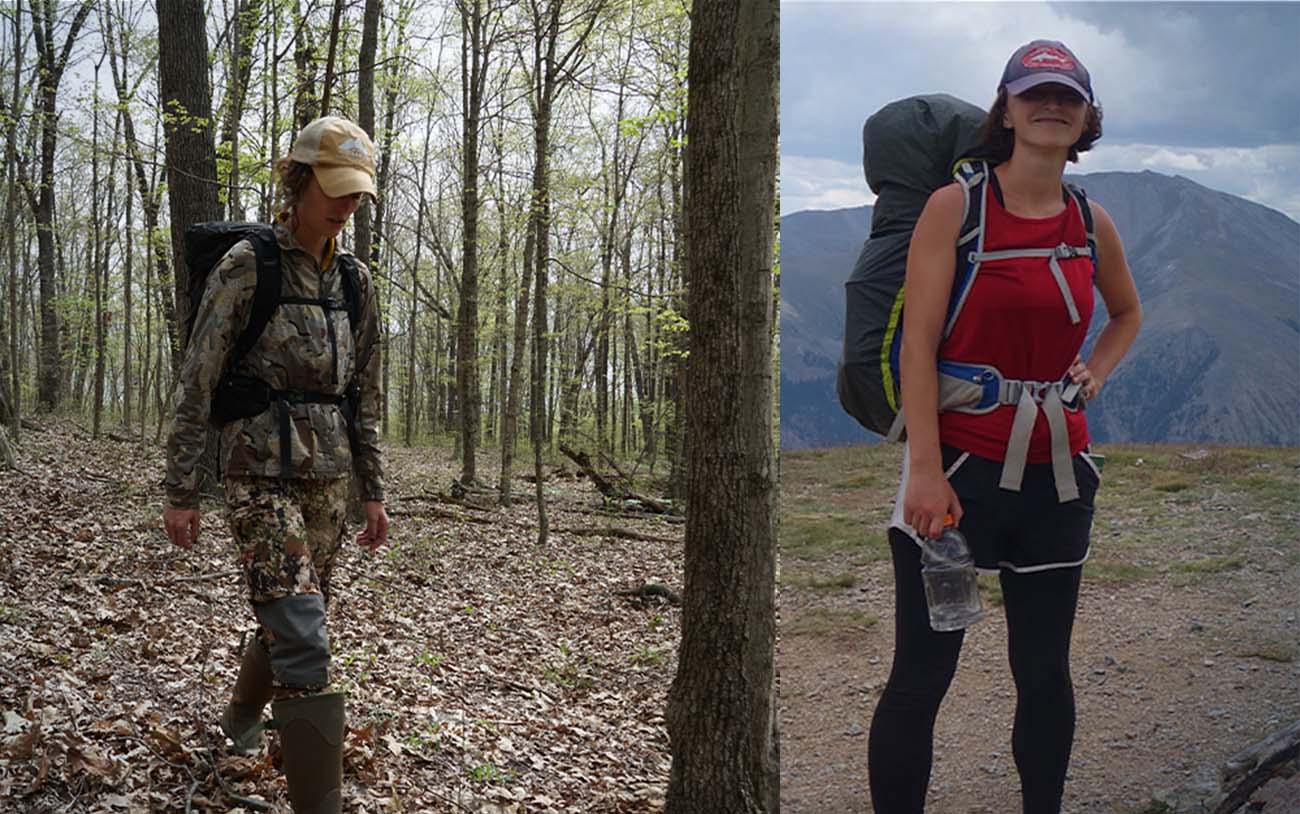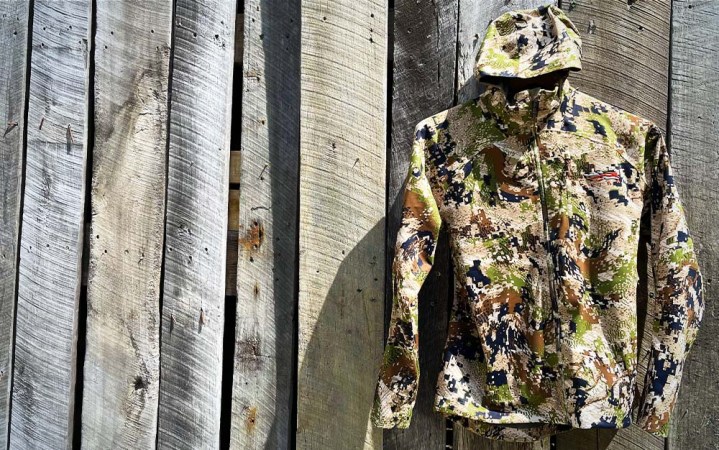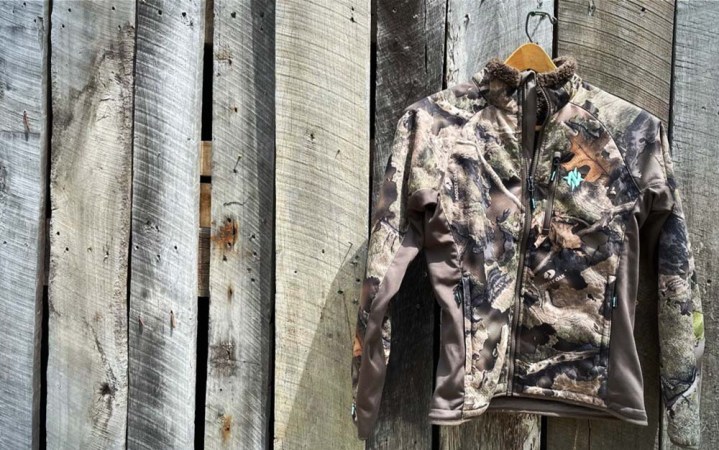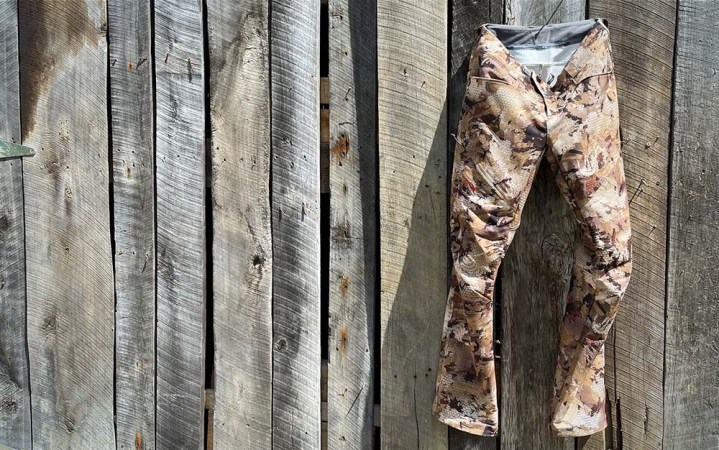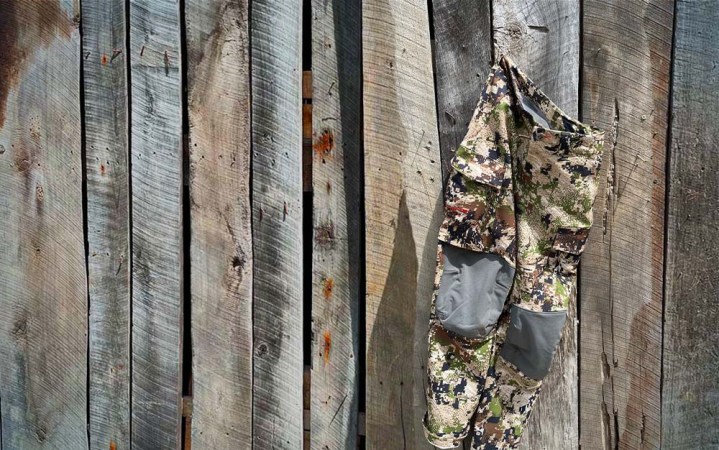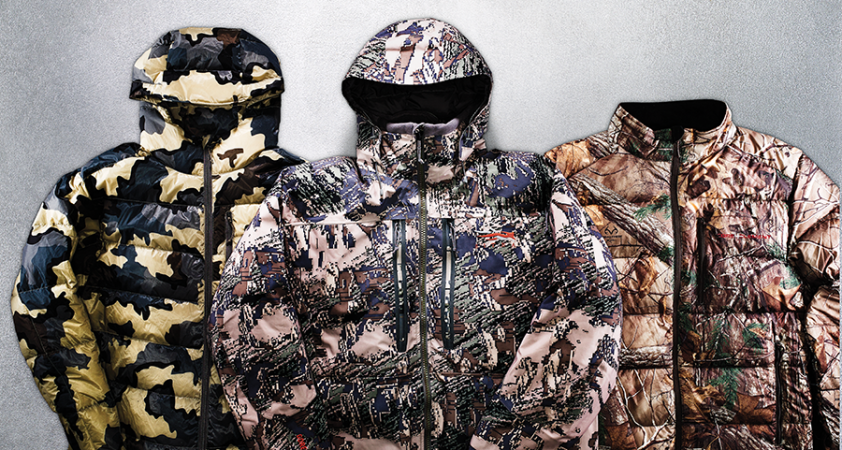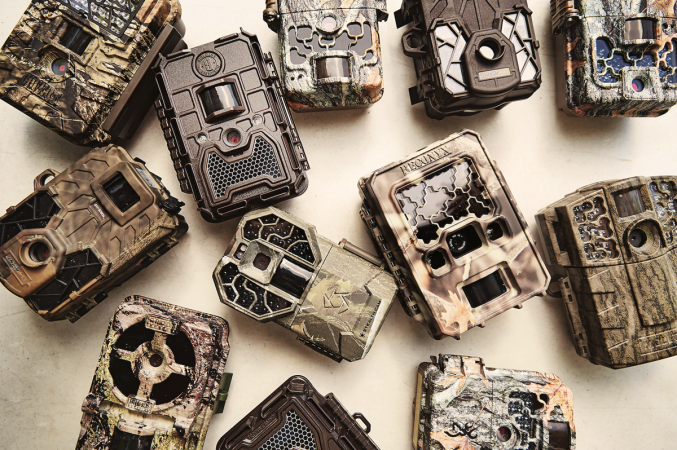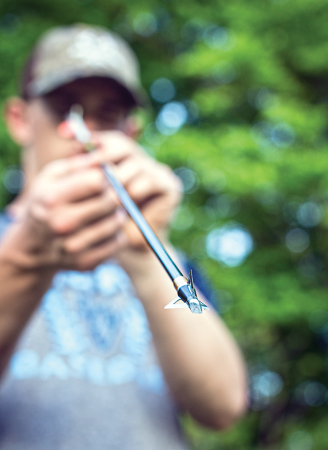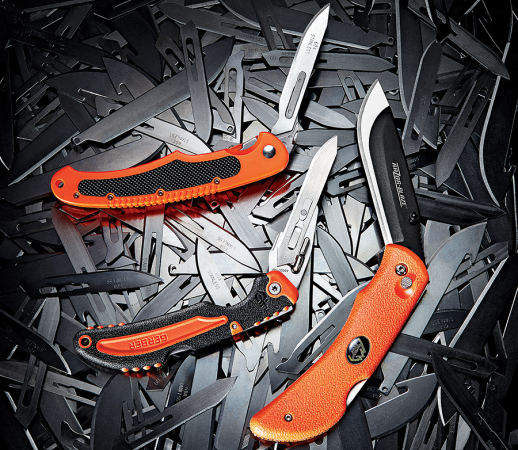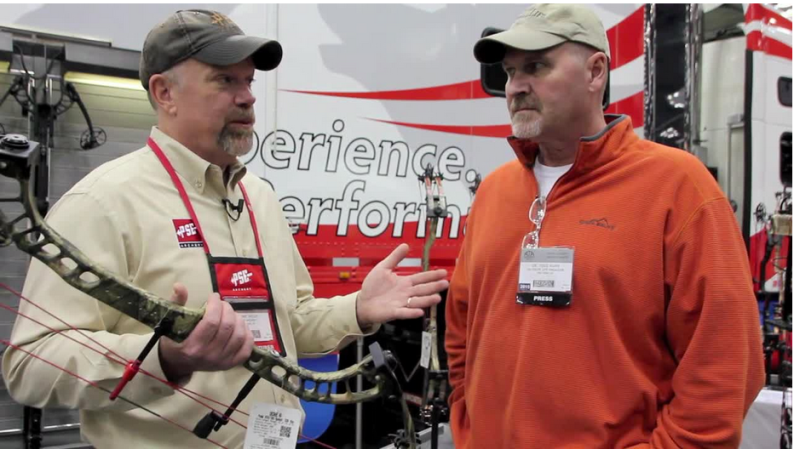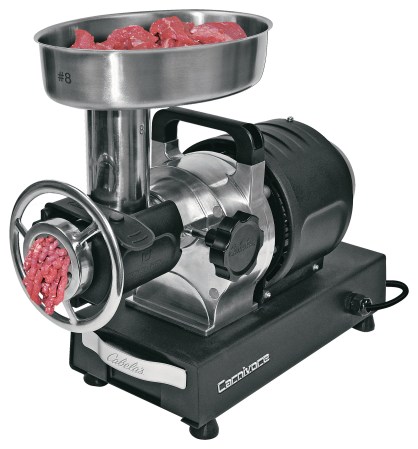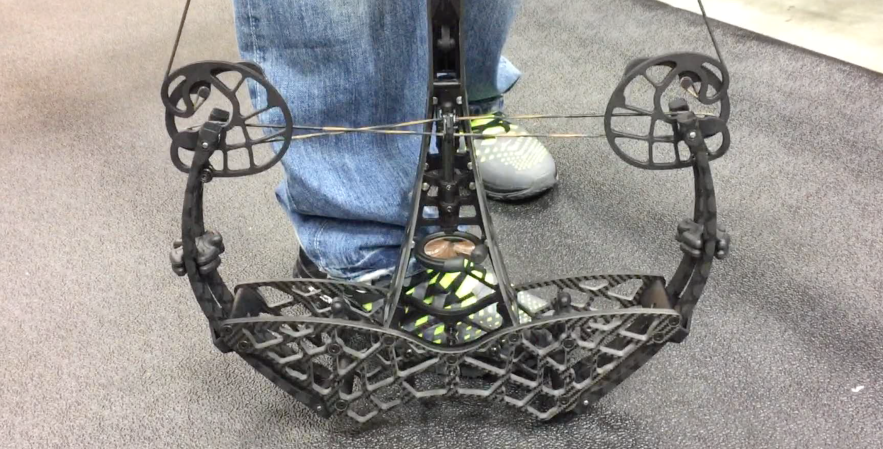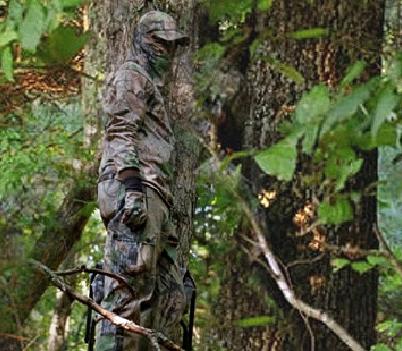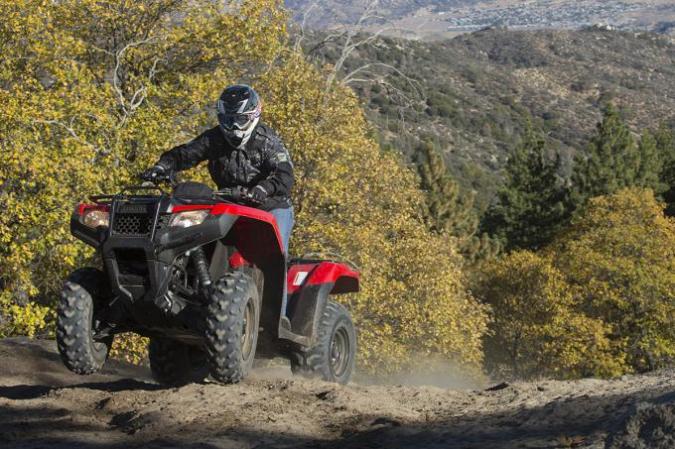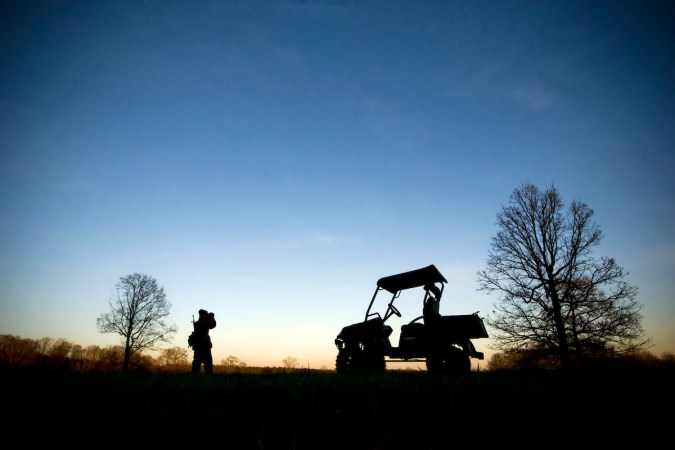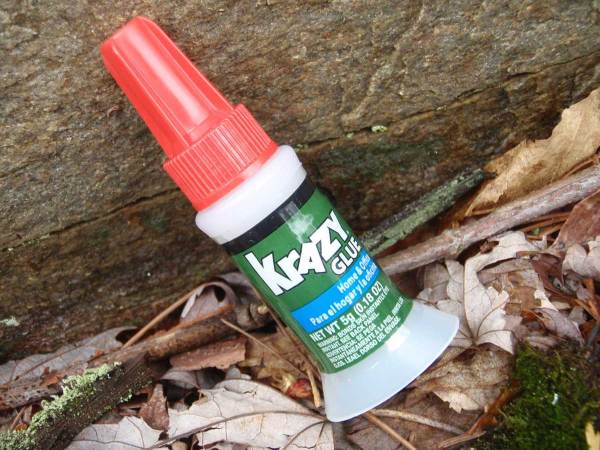We may earn revenue from the products available on this page and participate in affiliate programs. Learn More ›
Between the two of us, we’ve asked a lot out of our outdoor clothing over the years: to wick sweat on countless 14er ascents, withstand the abrasion of backpack straps over thousands of miles, and smell fresh enough to keep us from getting kicked out of McDonald’s when it’s been two weeks since laundry day. But we haven’t asked our clothing to make us look like that tree we’re leaning against. Or to help us move silently through the woods. Or to keep us warm when we’re staying perfectly still. For hours. To be honest, we’re not really used to (or particularly good at) sitting still, so this last part is a work in progress.
But during the most recent Outdoor Life team meetup, we got a chance to field test some of the best-in-class women’s hunting apparel from Sitka, Kuiu, and Nomad by taking it turkey hunting. Tagging along with experienced turkey hunters, we hunted hard for the better part of four days in the rolling hills of southern Indiana. And after all that legwork, we have some thoughts on how top-end women’s hunting gear compares to the women’s hiking and climbing gear that we’re used to adventuring in. Here’s some of what we brought along:
- Baselayers: KUIU Peloton 118 Zip; Sitka Core Lightweight Crew and Midweight Bottom
- Pants: Sitka Timberline Pant and Cadence Pant
- Shell Jacket: Sitka Mountain Jacket
- Jacket: Nomad Women’s Harvester Jacket
- Boots: LaCrosse Alpha Agility
Jackets
We’ll start with one of our favorite key pieces: We loved the Sitka Mountain Jacket. Those are some pockets, y’all. The wide, roomy openings were easy to stuff our hands into no matter what awkward position we were crouched into (even while wearing a turkey vest). And the pockets were so deep that Laura even managed to stuff her Norrøna Trollveggen Superlight Down Jacket into one of them when the day finally warmed up. Can we get samples of these to the hiking apparel companies so they can see what a woman’s pocket should look like?
Despite showing up for the hunt after a few days of rain, the jacket protected our puffers and baselayers from the dew and damp of the woods, although it also didn’t breathe particularly well. Given that it was only moderately water resistant, I would have expected it to perform more like a midweight baselayer than a hiking rain shell—but it’s hard to directly compare this to hiking clothing, since there isn’t a similar product offered by major hiking brands. A hunting jacket’s hood construction is also more critical than a hiking shell’s hood in terms of peripheral visibility. Sam kept her hood up in early mornings and late evenings to keep the cold at bay, and didn’t feel as though her vision was limited. Something else we didn’t consider before this trip was noise, and thankfully, this jacket is quiet. In our experience, “too loud” on the trail is bringing a personal speaker. “Too loud” on a hunt is a crinkly outerlayer. Thanks to Sitka, we didn’t have to learn this the hard way and sacrifice dry midlayers for quietness.
We also loved seeing what hunting apparel companies think a size small is. The Sitka Mountain Jacket extended well past our hips—a major plus in our books, since that coverage offers protection from both rain and ticks—with enough room underneath for a baselayer, a puffy layer, and, in Sam’s case, another baselayer and a midweight layer (she runs cold, OK?). Plus, the sizing goes up to an XXL. The hiking apparel world could take some notes from the Sitka Mountain Jacket on size inclusivity.
Unfortunately, the same could not be said for the Nomad Harvester Jacket (pictured above). Sam tested the Harvester and found it incredibly warm, but not conducive to layering. Hand-warming pockets are a must in a thicker jacket (especially when sitting for a long time), but this jacket sacrifices a lot of warmth by being a little too slim and flattering. Sam ordered this jacket in her standard size small, and found little room to layer underneath it, specifically citing the tight waist. On the coldest hunts, she opted for a significantly less warm Sitka Mountain Jacket so she could layer as much as she wanted under it. If she were to buy the Nomad Harvester after testing, she’d get a large—that double size leap doesn’t bode well for hunters who would normally wear a large or XL. And let’s not forget that plenty of mountaineering and hiking brands have this issue too: We’d like to see the entire outdoor industry include, as part of their sizing specs, information about what kind of layering you can expect to do under a jacket.
Baselayers
The Kuiu Peloton 118 Zip and Sitka Core Lightweight Crew and Midweight Bottom we received were sized well, but we thought they were a little thin for sitting around on chilly, 40-degree mornings. If we had a do-over, we’d definitely grab the heavyweights instead.
But what we really wanted for a spring turkey hunt was a midweight merino layer, which would have kept us plenty warm while waiting on a gobbler to fly down, and wouldn’t have resulted in overheating when we went on the move again. Also, while we appreciated the Polygiene (which uses silver to block odor buildup), we’ve found over the years that the naturally occurring lanolin in wool has proven much better at fighting stink in unwashed laundry. For our next hunt, we’ll plan to check out the Kuiu women’s ULTRA Merino 145, which is closer to what we wear on hikes.
We also noticed that the Fanatic Core Lightweight Bottom has a fly opening, which confused Laura at first—was it a holdover from the men’s design? But Sam realized that it’s meant to be paired with a female urination device, like the GoGirl. And given the number of ticks we saw (certainly more than turkeys), we weren’t inclined to drop trou. So, we could be persuaded to give it a try.
Pants
Generally, we both found that the Sitka Cadence Pant, intended for waterfowl but pulling double-duty with turkeys in this instance—was much more form-fitting than is typical for women’s hiking pants. The latter are pretty stretchy and loose-fitting—even when compared to those made for more technical purposes, like the Fjallraven Keb. But we could see the advantages. First, the snugger fit helped quietly secure anything we put into the pockets, which were as functional as the Mountain Jacket’s. I rarely keep the essentials—like keys, cards, chapstick, snacks—in my hiking pants, as items tend to move too much when I’m walking and the pockets barely hold anything anyway.
We also noticed that we were sneakier in the Cadence Pant (pictured above). Hiking pants are typically designed to maximize durability and wicking, which means they also sound crinkly. But Laura, who has an average build for women, was disappointed in how hard it was to actually pull these pants on. Putting on camo shouldn’t require the wriggling that’s usually reserved for getting dressed up for a wedding. This also affected her range of motion: The tightness in the hips made it more of a chore to crawl after a turkey than she would have experienced in a looser cut. She also noticed that while her knees stayed dry for the first ten minutes of army crawling, the moisture from the damp grass started to soak through after that, a reminder that these pants are only somewhat water resistant. Laura also noted that Sitka’s pants sizing was inconsistent: A 28R on their Timberline Pant (pictured below) fit well (similar to her sizing for hiking apparel), but she had to size up to a 30R for the Cadence Pant.
While the Cadence Pant that Laura tested did not have knee pads, after army crawling and resting a gun on her knee for longer than a minute, she can see the appeal. Being comfortable is key to being still and quiet, and she probably would have done a somewhat better job at that if she had a bit of extra padding. The Timberline Pants do, however, have knee pads, which are both useful and removable. While Sam removed the pants’ knee pads for the three-day hunt, now that she knows a little more what she’s doing, she’ll probably opt to use them next time. Even without the knee pads, the pants fared well while she was crouching and crawling, proving the durability of the material.
What’s Staying in Our Gear Closets
Laura is planning to keep the baselayers from Sitka and Kuiu in rotation for future summer-weather backpacking and hunting trips, and we’ll both be keeping the Sitka Mountain Jacket (easily our favorite piece we tested). While Sam is planning to stick with the Sitka Cadence Pant, Laura is on the lookout for a pair that’s easier to pull on. Because the Cadence Pant comes in two colors (Optifade and Shadow gray), Sam’s planning to use them for high-alpine hikes in the summer.
For future hunts, we’ll also be looking to see how the Kuiu ULTRA Merino 145 stacks up against proven baselayers and insulation layers from the hiking apparel world, including IBEX’s Merino Woolies Tech and the warm and packable Norrøna Trollveggen Superlight Down Jacket. (We’ll be sure to make sure our jackets conceal any unwanted colors).
While we both agreed that it’s never our first choice to wear rubber boots in the outdoors, Sam’s planning to stick with the Alpha Agility for future hunts where hiking shoes won’t cut it. Laura, on the other hand, after crossing and recrossing streams until her hiking boots were totally soaked, is going in the other direction: for future hunts, she plans to don lightweight trail runners. She knows this might raise some eyebrows, but ever since spending two weeks trekking through the High Sierra in shoes soaked from glacial melt, she’s fine with wet feet as long as she’s wearing high-quality hiking socks. What matters to her is to have a flexible shoe that won’t cause blisters.
Fashion or Function?
Hiking clothing, at least for women, more often than not blends fashion and function, and it’s not always apparent which is the priority. Some of the priciest brands in outdoor apparel got that way—not because their gear is doing the best job of wicking away sweat, or keeping out the rain and sleet—but because they look great to wear.
We’ll be honest—we have mixed feelings about this. Sam appreciates having gear that has a great cut, which makes sense: in her corner of the Rocky Mountains, your next trail run or scramble might literally be squeezed in between work and dinner with friends. And why shouldn’t you look great in outdoor gear? But out on the West Coast, Laura sees problems when performance tries to function as fashion. It’s driving up prices and, occasionally, turning popular trails into catwalks. This can be frustrating, since many women first head into the outdoors to escape the mirrors, snap judgements, and everyday fashion nonsense that can be the norm of the frontcountry.
It would be impossible for us to separate our experience of wearing hunting clothing for the first time with our first experience of hunting. The cuts were not flattering, but there was no one around to judge us. And the camo that would have raised eyebrows on our local trails helped to make us one with the woods of southern Indiana. It was surprisingly freeing, and ended up being one of the more memorable aspects of the trip.
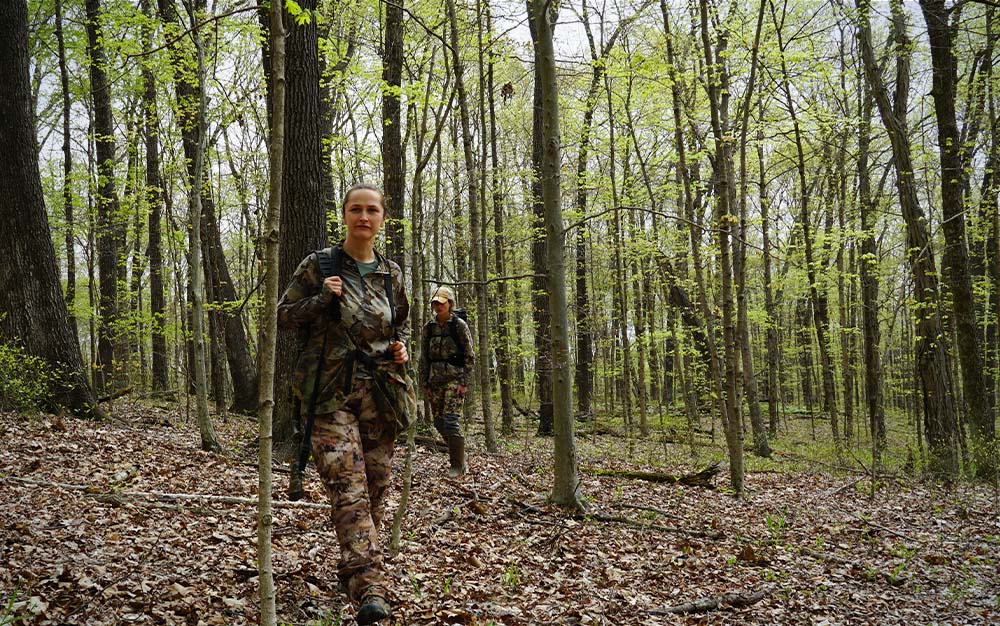
Final Thoughts
After hearing feedback from other hunters, we can see that women’s hunting gear has come a long way—without falling into some of the pitfalls of hiking apparel—but it’s also clear that there needs to be a better balance between the offerings for men and for women. The discrepancy is so significant that one hunting apparel manufacturer offered to send us the smaller sizes of men’s clothing, and another offered to send junior’s.
To some extent, that makes sense: Hunting is still dominated by men. Only 10 percent of hunters are women. But that was also true of climbing just decades ago, and today an estimated 40 percent of climbers are women. The lack of purpose-built women’s clothing not only limits hunters, but it could also send the wrong signal to aspiring hunters: that if the clothing wasn’t built for them, perhaps this sport isn’t for them, either. The more companies that design hunting clothing for women, the more we’ll enjoy hunting. We look forward to seeing where the hunting apparel world takes their women’s lines in the future—there is a lot of room to grow, and the more companies get into this space, the more of a market there will be to serve.

